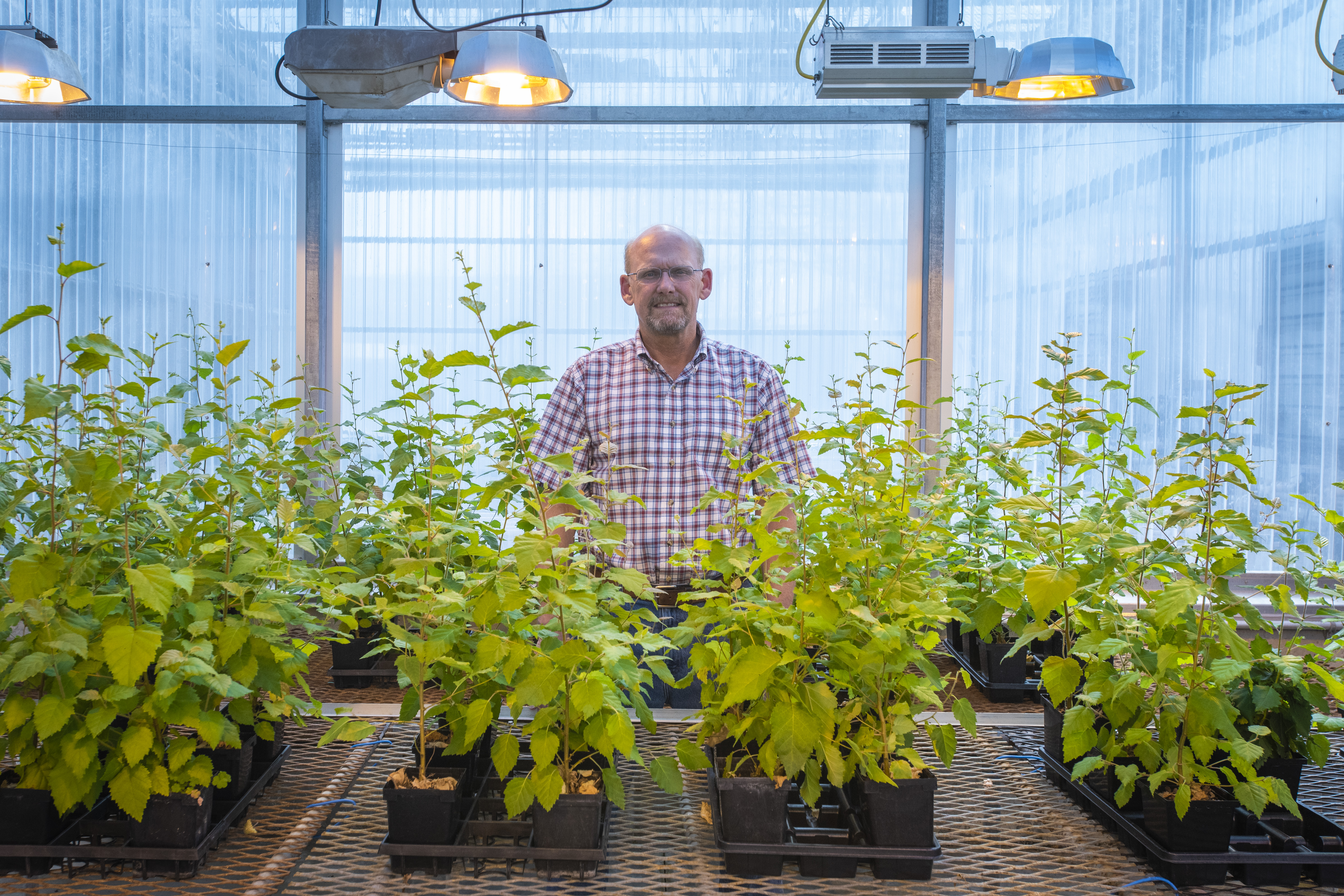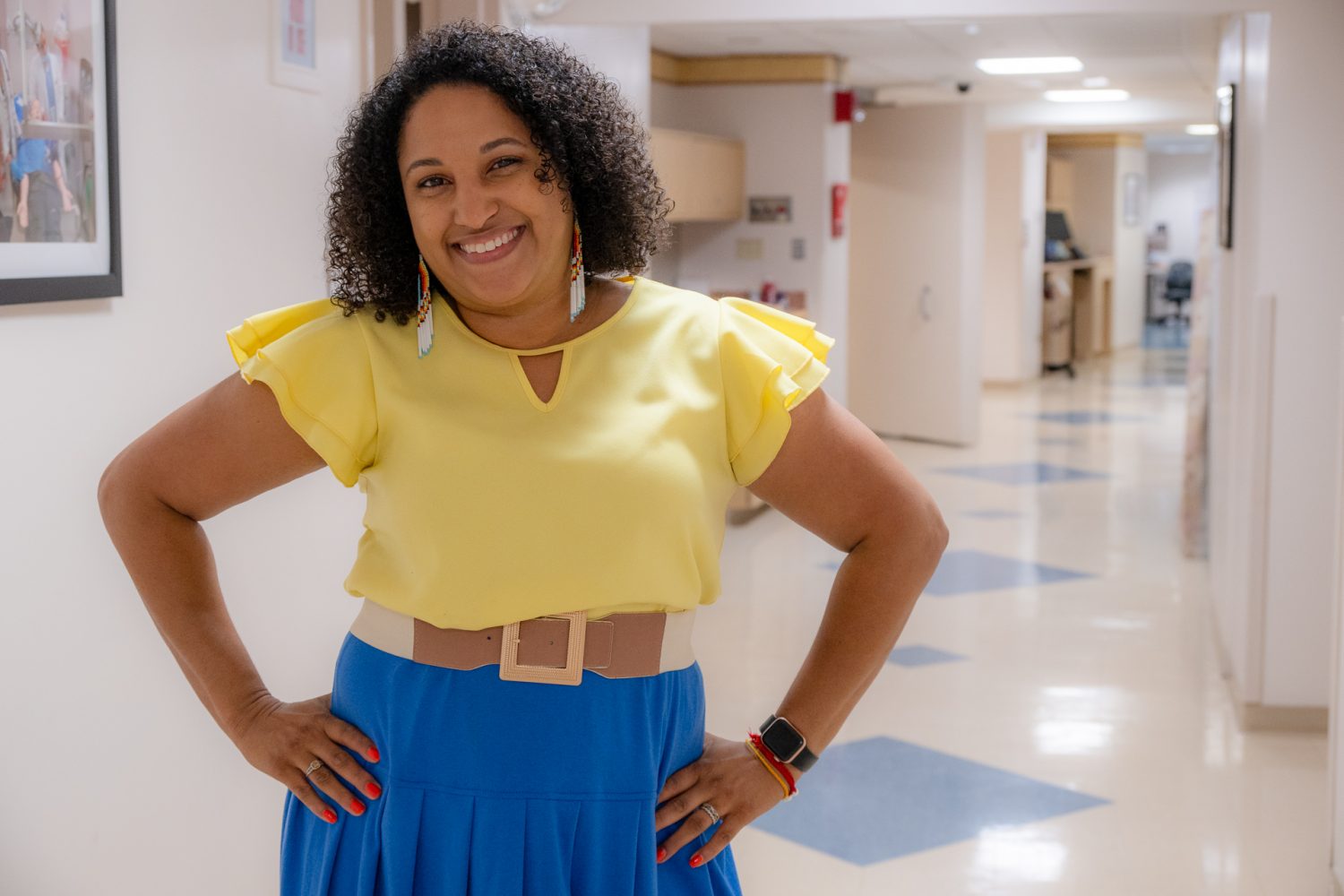UConn’s beloved “swing tree” near Mirror Lake, now reaching the twilight of its natural life, will live on through dozens of healthy seedlings that a UConn horticulture professor has nurtured in a campus greenhouse since last fall.
The swing tree has been undergoing special treatment since UConn officials noticed signs last year that indicated health problems, particularly when the upper portion of its crown failed to leaf out in springtime.
The tree had been home to two wooden swings since about 2010, and had become a popular meeting spot for friends and people who wanted to write anonymously in the journal that makes its home in a nearby mailbox.
UConn arborists and outside experts initially thought the swing tree’s roots weren’t absorbing enough water and that it might have been stressed by the recent hot and dry summers, but later determined that the main issue is likely its advanced age.
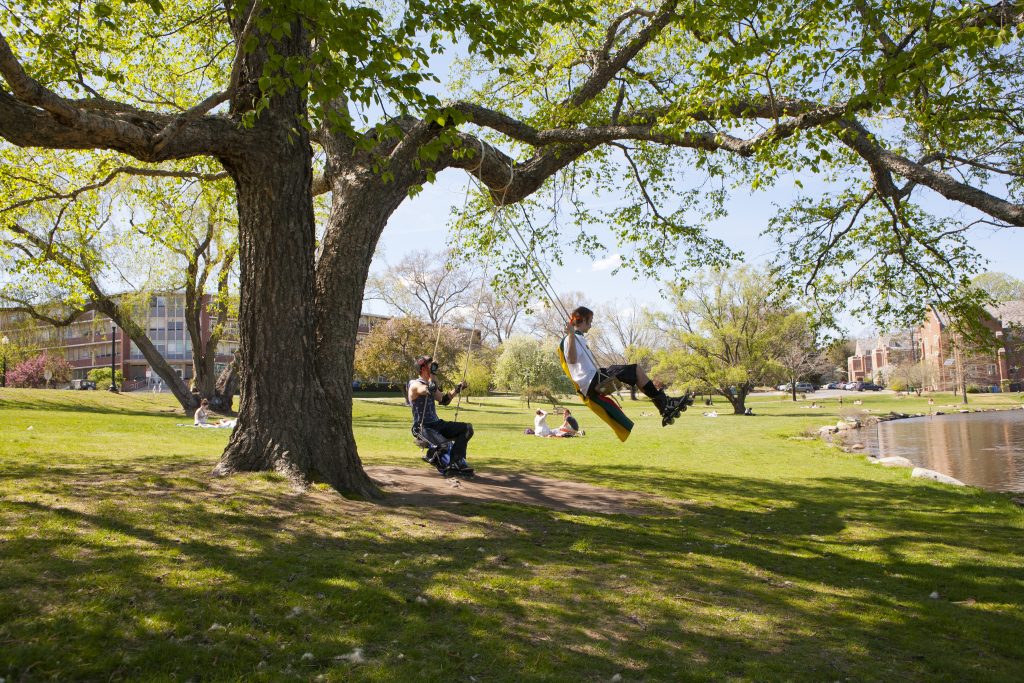
Estimated at nearly 70 years old, it’s already relatively old for that type of tree – a Dahurian birch, also called Asian black birch – which isn’t known for its longevity.
The swings were taken down last year, as experts treated the soil around the tree’s base with an organic soil enhancer and bio-stimulants that promote tree health and growth, and aerated the soil to better help water reach the critical root zone.
But it didn’t leaf out this spring, either, so while UConn will continue to care for and monitor it, the swings won’t return to that particular tree.
Mark H. Brand, a UConn Arboretum Committee co-chair who is also professor of horticulture in UConn’s Department of Plant Science and Landscape Architecture, says the Dahurian birch “swing tree” species is rather rare in the U.S. Specimens are usually seen only at arboreta, botanical gardens, and some university campuses.
“Birches grow quickly, but they aren’t by nature a very long-lived tree,” he says.
The fact that they do grow quickly has been a boon to UConn, though, as it sought ways to preserve the tree’s legacy.
At the end of last summer, Brand visited the tree and collected female catkins – seed-carrying cone-like fruits – and put the seeds in protective containers. He planted about 60 of them and put them under fluorescent lights, not knowing if they would germinate.
“The branches I was collecting them from were clearly not happy branches health-wise, so I thought there was a 50-50 chance that it would work,” Brand said.
Under Brand’s watchful eye and with the help of fluorescent lights – birch seeds require light for germination – the seeds germinated and grew steadily as the months passed, eventually getting large enough to each warrant its own quart-sized pot. Today, they range between 2½ and 3 feet tall, a living tribute to the “swing tree” that’s provided shade and inspiration to generations at UConn.
“It’s a pretty rare and untested species in the U.S., and can be difficult to come by, so we were happy to see these take root,” Brand said on a recent afternoon in the greenhouse, where the seedlings have been growing in neat rows for months.
“It’s also a really attractive tree in the way the bark grows, with layers that curl over each other,” he added. “It’s a very nice tree for us to have here.”
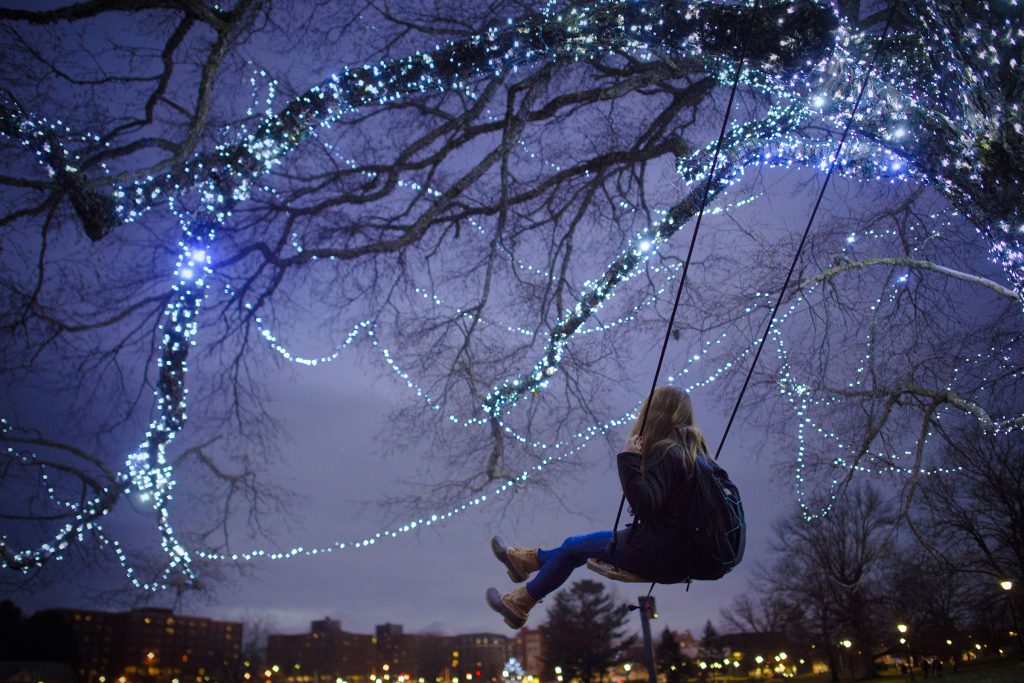
The University hasn’t yet determined what will be done with the swing tree seedlings and any other descendants that could be grown from the additional seeds that are being stored. One idea being considered is to sell them as a fundraiser to support the Class Tree Project, in which each year’s graduating class picks and plants a tree as a lasting tribute.
The Dahurian birch or Asian black birch, the so-called swing tree’s species, is native to northern China, Korea, and Japan, and specimen trees usually range from about 40 to 60 feet at maturity, according to the UConn Plant Database.
Also known by its scientific name, Betula davurica, UConn’s swing tree is the only known example of that species in this region and is frequently photographed, including when it used to be lit up during the holidays while it was still in good health.
Although the origins of the swing tree are not confirmed, Brand says he suspects the late Kenneth Bradley or his colleagues from the Department of Plant Science might have been involved. Bradley was a UConn professor from 1947 to 1977, and he and others were very active in procuring rare trees from arboreta and other sources to plant on campus.
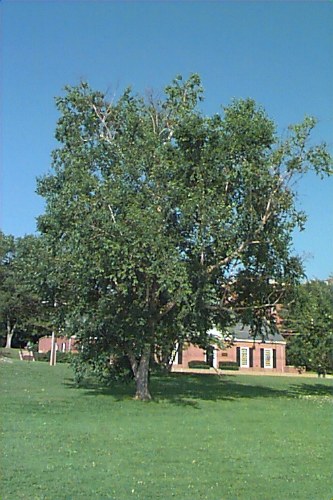
A second Dahurian birch tree once grew on campus on the opposite side of Mirror Lake, but that tree fell victim to the bronze birch borer insect about 15 years ago.
However, the fact that there once were two such trees on campus, in addition to their symmetrical locations on either side of the lake, lends strength to the idea that Bradley or others purposely sought and planted them.
The trees and shrubs at UConn Storrs are among its most visible and vibrant natural resources, beautifying the campus while providing a living laboratory for students enrolled in plant science, biology, environmental science, and other related courses.
The UConn Arboretum Committee, which Brand co-chairs, helps oversee the care of the campus trees and shrubs, and manages an inventory of almost 4,300 individual trees. It also produces a brochure to direct people through self-guided tours of more than 30 notable selections, including the swing tree.
The Storrs campus is also certified each year as a Tree Campus USA by the Arbor Day Foundation, the first college in Connecticut and third in New England to receive that distinction among a few hundred schools nationwide.
People who want to support the Class Tree Project don’t need to wait to see whether the swing tree seedlings will be offered for sale; donations to the fund can also be made through the UConn Foundation.
